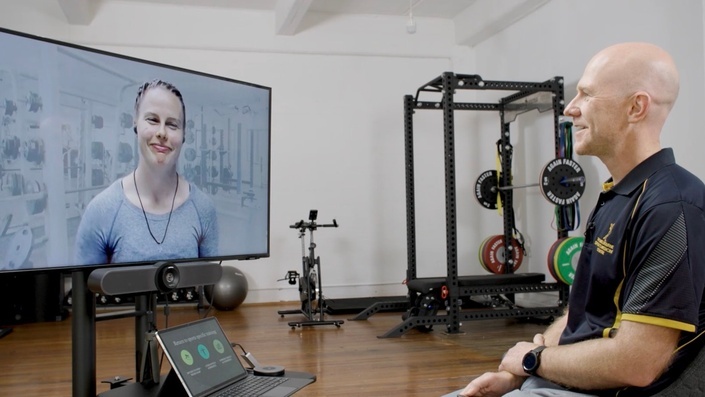Introduction
The Late Stage ACLR Rehab: The Winter Based Athlete Masterclass, taught by Janina Strauts and Mick Hughes, explores the subtleties and finer details of rehabilitation for a winter-based athlete, from preparing for jumping and landing on snow, to return to sport testing. This Executive Summary provides clinically relevant, actionable information that may be useful to health professionals.
Part 1: Demands on the Winter Athlete & Late-Stage Rehab
Amongst winter-based athletes, there is still a wide variety of physical and mental demands placed on the individual depending on their event, training environment and equipment used, highlighting the importance of undertaking a needs analysis to determine what to focus on in rehab. For example, skiers compared to snowboarders face different directions, and adopt different body positions. Once this is completed and the athlete is well into their rehab, there needs to be a shift of mindset from rehabbing the injury to returning to performance.
- Inner range hamstring strength is vital when landing to slow movement of feet forward relative to body, keep the legs underneath the athlete as they land, and also allow them to pull back from difficult positions.
- Landings should progress from stationary landing and running mechanics, to absorption of force vertically and horizontally, to production of force vertically and horizontally, to unilateral variants, then adding speed and load.
- Tailor jumping and landing to the individual and their sport, as some winter sports require really quick force absorption, rather than necessarily force production. Running is a great way to physically prepare winter athletes as it is a single leg impact exercise, can improve bone health, and can be adjusted to replicate the work to rest ratios of their sport.
- Completing gymnastics work on a trampoline using techniques such as brassards or kill bounces are a fantastic way to introduce jumping and landing, replicate the snow, practice sport specific positions and develop good quadriceps strength.
- Risk and unpredictability can be introduced through use of unstable surfaces to jump or balance on such as a bosu, use of perturbation when balancing or completing change of direction drills, or adding mid-air movement when landing to ensure the athlete is comfortable to land from different directions and positions.
Masterclass Preview
Even the winter athlete should be performing running and change of direction drills throughout their ACLR rehab.
Enjoy this free preview of Janina and Mick discussing the importance of integrating running and changes of direction in the management of late stage ACLR for winter based athletes!

Part 2: Assessment and Return to Sport Testing
Given there is up to a 30% ACL re-injury rate, thorough return to sport testing is paramount to keep our athletes healthy. Testing protocol should be graded, starting from static tests like static balance, moving to landings and hopping, then to a strength and conditioning focus through assessment of a countermovement jump. It’s also important to not dismiss the athlete’s psychological readiness and overall state by continuing to check in with them to ask how they are feeling, paying attention to their body language, and through use of objective data such as the ACL RSI questionnaire.
- It’s important to not just use limb symmetry index (LSI) when assessing measures such as strength and hop tests, as the contralateral limb also loses significant strength throughout ACLR rehab. LSI should always be paired with normative data. 80% LSI on the single leg squat to box endurance test and single leg hop tests is recommended before returning to training on snow, whilst 92% LSI is recommended on all of these tests to return to competition.
- Return to sport criteria should utilise minimal equipment so that it is easy to replicate in the future or in different environments.
- The BESS balance testing protocol should be used to assess stationary balance, progressing from 30 second holds with 2 legs, to 1 leg, to tandem stance, from eyes open to eyes closed, and from a firm surface to a soft surface. Once this is complete, it is appropriate to progress to dynamic landings.
- Dynamic landings should progress from double leg, to single leg, to jumping medially to encourage valgus control. It’s also important to note that the ideal landing technique will change depending on the sport’s demands, as for example a mogul skier needs to maintain a stiff, upright posture throughout landing.
- We must consider on-snow progressions, including transitioning from large turns to small turns, a gentle gradient to a steep gradient, slow to fast speed, small to big jumps and a groomed terrain to off-piste.
- Continue to pay attention to knee symptoms throughout the return to sport process, such as swelling, pain, loss of range of motion and abnormal gait patterns.


